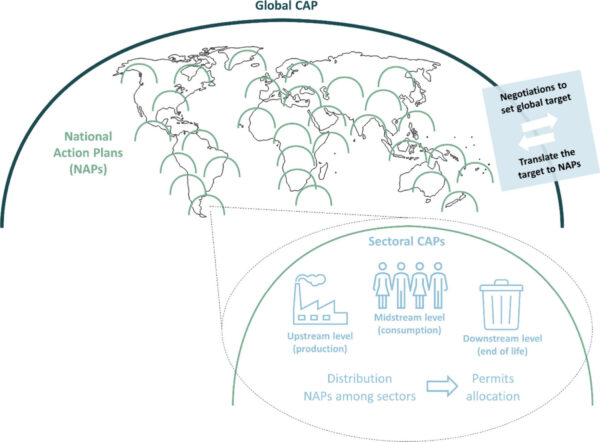Cap-and-Trade Policy: Is it Beneficial for Plastic Waste Management?

As policymakers seek practical regulatory approaches for plastic waste, a cap-and-trade (CAT) system offers one possible framework.
Since 2000, 28 established international policies have focused on plastic regulation. Still, the global regulatory environment comprises policies driven by regional contexts, making it fragmented. More recently, policymakers are shaping the industry with rules focused on the entire lifecycle of plastic. Instead of only regulating end-of-life (EOL) plastics, newer international initiatives focus on a circular economy. As the regulatory environment continues to evolve, systems that have worked elsewhere may find their way to the plastic industry.
You can also read: Can the EU Hit Its 2025 Recycling Targets?
For example, cap-and-trade (CAT) systems are market-based instruments (MBIs), which are tools for regulation through market incentives. CAT systems create an artificial market for specific pollutants or resources. One such example is the European Union emissions trading system. This system aims to reduce greenhouse gas emissions by placing an annual cap on allowable emissions. Stakeholders can buy emission allowances in auctions and trade them. These systems must be tailored for their context—in this case, plastic—in order to be effective.
CAT systems require the identification of the target resources and regulated groups. Depending on the approach taken, these resources could include raw materials, processed materials, waste, etc. Then, a regulatory body must establish limits for pollutants or resources—this is the “cap”. The regulatory body then divides the cap into tradable permits. Existing CAT systems demonstrated the importance of continuous feedback and adaptability for these policies, depending on political and economic landscapes.
Is this a Possibility for Plastic Regulation?
Plastics pose a particular complexity for CAT systems due to their wide variety of polymer types and environmental impacts. For international policy, each nation’s relationship with the industry may lead to different requirements of the CAT guidelines. One approach to international regulation suggests a three-level system.

A three-level system could help individual countries achieve a global regulatory goal. Courtesy of Opportunities and Challenges of a Cap-and-Trade System for Plastics.
A global cap would quantify the international mitigation target, with flexibility for individual countries. The second level would encompass these county-specific caps. The third level comprises the tradable permits. To accommodate heterogeneity in material properties, policymakers may establish metric-unit permits. These permits could account for characteristics such as recyclability, lifespan, and hazardousness.
Establishing an effective CAT system requires communication and flexibility. The system would need to grow and change with the political and economic environment.

A CAT system can provide incentives to industry stakeholders, but it comes with implementation difficulties. Courtesy of Opportunities and Challenges of a Cap-and-Trade System for Plastics.
This system could promote industry sustainability while providing economic incentives, raising the value of plastics near their EOL. Still, introducing a CAT system into the plastic industry comes with significant challenges. Material diversity, additives, and existing economy models create difficulties for regulation on a global scale. Additionally, some countries are involved upstream in the manufacturing process, while others are downstream with significant plastic waste. Global CAT systems require willing participants, too. Political and economic instability may limit participation from certain countries. Therefore, establishing a CAT system in the plastic industry comes with significant complexities. Even so, though it may take further time and research, a CAT system could help shape the industry’s regulatory landscape.
